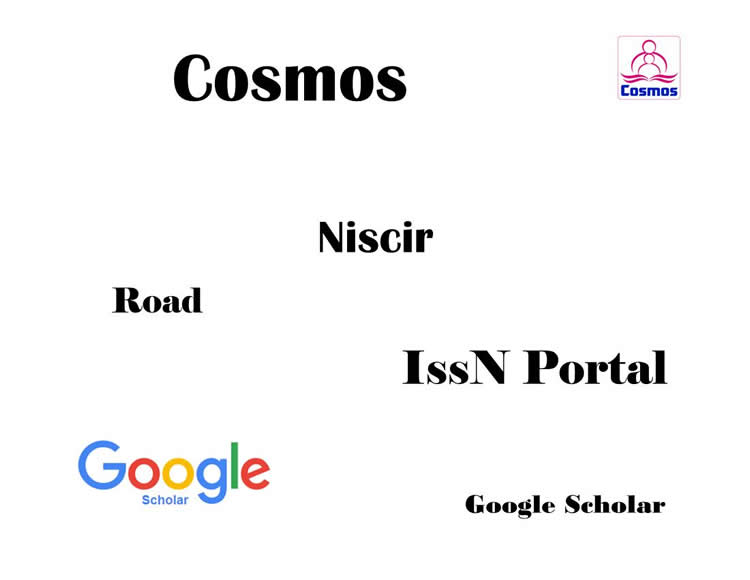


AUTHOR GUIDELINES
Some points:
Open access information
This is a fully open access (gold open access) journal. If you submit to this title and your paper is accepted, you will be required to pay an APC (article processing charge).
Manuscript requirements
Before you submit your manuscript, it’s important you read and follow the guidelines below and ask you to visit our site and see published papers.
| Format | Article files should be provided in Microsoft Word format While you are welcome to submit a PDF of the document alongside the Word file, PDFs alone are not acceptable. |
| Language | We only accept the manuscript written in English. Author can use both American and British version of English, but not mixture |
| Article length or word count | Articles should be between 4000 and 6000 words in length. This includes all text, for example, the structured abstract, references, all text in tables, and figures and appendices. Please allow 280 words for each figure or table. |
| Article title | A concisely worded title should be provided. |
| Author details |
In multi-authored papers, it’s important that ALL authors that have made a significant contribution to the paper are listed. Those who have provided support but have not contributed to the research should be featured in an acknowledgements section. You should never include people who have not contributed to the paper or who don’t want to be associated with the research. |
| Biographies and acknowledgements | If you want to include these items, save them in a separate Microsoft Word document and upload the file with your submission. Where they are included, a brief professional biography of not more than 100 words should be supplied for each named author. |
| Research funding | Your article must reference all sources of external research funding in the acknowledgements section. You should describe the role of the funder or financial sponsor in the entire research process, from study design to submission. |
| Structured abstract | All submissions must include a structured abstract, following the format outlined below. These four sub-headings and their accompanying explanations must always be included:
The maximum length of your abstract should be 500 words in total, including keywords |
| Keywords | Your submission should include up to 10 appropriate and short keywords that capture the principal topics of the paper. Please note, while we will always try to use the keywords you’ve suggested, the in-house editorial team may replace some of them with matching terms to ensure consistency across publications and improve your article’s visibility. |
| Article classification | During the submission process, you will be asked to select a type for your paper; the options are listed below. If you don’t see an exact match, please choose the best fit:
You will also be asked to select a category for your paper. The options for this are listed below. If you don’t see an exact match, please choose the best fit: Viewpoint. Covers any paper where content is dependent on the author's opinion and interpretation. This includes journalistic and magazine-style pieces. Technical paper. Describes and evaluates technical products, processes or services. Conceptual paper. Focuses on developing hypotheses and is usually discursive. Covers philosophical discussions and comparative studies of other authors’ work and thinking. Case study. Describes actual interventions or experiences within organizations. It can be subjective and doesn’t generally report on research. Also covers a description of a legal case or a hypothetical case study used as a teaching exercise. Literature review. This category should only be used if the main purpose of the paper is to annotate and/or critique the literature in a particular field. It could be a selective bibliography providing advice on information sources, or the paper may aim to cover the main contributors to the development of a topic and explore their different views. General review. Provides an overview or historical examination of some concept, technique or phenomenon. Papers are likely to be more descriptive or instructional (‘how to’ papers) than discursive. |
| Headings | Headings must be concise, with a clear indication of the required hierarchy. |
| Sub heading and Point | Times New Roman with single space and single column on standard A4 size paper. Heading: All heading must be bold-faced, Sentence Case, aligned left with 12 point-Times New Roman and sub-heading in 10 point. |
| Endnotes | Notes or endnotes should only be used if absolutely necessary. They should be identified in the text by consecutive numbers enclosed in square brackets. These numbers should then be listed, and explained, at the end of the article. |
| Figures | All figures (charts, diagrams, line drawings, webpages/screenshots, and photographic images) should be submitted electronically. Both colour and black and white files are accepted.
|
| Tables | Tables should be typed and submitted in a separate file to the main body of the article. The position of each table should be clearly labeled in the main body of the article with corresponding labels clearly shown in the table file. |
| References |
Surname of the Author » Name of the Author » Year within bracket » Name of the journal or Book or Seminar or Conference » Name of the Topic » Page no.
Example:
Note: For Internet sources no link address only website and sources. Please do not include DOI number in the references |
Before you submit your manuscript, it’s important you read and follow the guidelines below and ask you to visit our site and see published papers.


